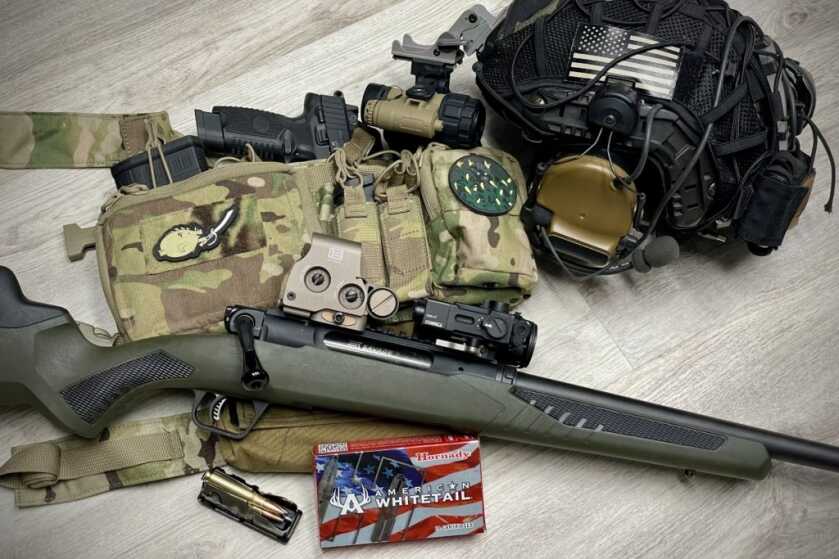
Featuring a quick straight-pull action, the Savage Impulse Hog Hunter is built for speed! Designed for quickly putting down multiple feral hogs which often roam in groups, I think Savage was really on to something here. Simply pull the bolt straight back, and then push it forward to eject an empty case and chamber a new round while eliminating the nonsense of time-consuming traditional 90-degree bolt throw. While having no previous experience with a straight-pull rifle before testing this Savage, I have grown to love his design.
Specifications:
Action: Bolt
Barrel Length (in)/(cm): 18 / 45.720
Barrel Material: Carbon Steel
Caliber: 308 WIN (30-06 SPFLD, 300 Win Mag, and 6.5 CREEDMOOR)
Magazine Capacity: 4
Hand: Right
Length of Pull (in)/(cm): 13.75 / 34.925
Magazine: Detachable Box Magazine
Overall Length (in)/(cm): 39.5 / 100.330
Rate of Twist (in): 1 in 10
Receiver Material: Aluminum
Type: Centerfire
Stock Material: Synthetic
Stock Type: Sporter
Weight (lb)/(kg): 8.43 / 3.82
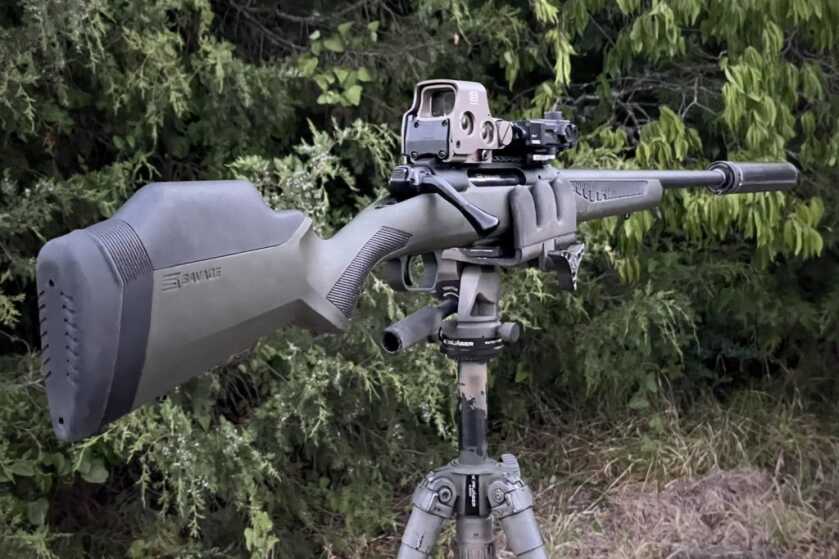
While not yet very popular in the US, straight-pull rifles are making an entry with multiple manufacturers getting into this space within the last year or two. Traditionally this style of rifle has been more complicated, expensive, and heavy. However, the saving grace is a straight-pull’s potential rate of fire. Aiming to see what this setup could do, I did multiple mag dumps from around 10 yards and had no trouble getting solid center mass hits on a USPSA silhouette with splits averaging 0.95 seconds between shots, with occasional follow-up shots as quick as 0.80 seconds. While this is nowhere near the split times I can get from a semi-automatic rifle, this straight-pull design is legal and available in many countries and states with ridiculous firearm restrictions that may outlaw semi-autos.
The most interesting feature of the Savage Impulse Hog hunter in my mind is the bolt. Designed to use what Savage calls a “hexlock” mechanism, six hardened steel ball bearings get pushed out to lock the bolt into a grooved barrel extension. The way this works is that the ball bearings in the bolt head freely float, but when the bolt handle is cammed forward, the inner bolt assembly moves forward forcing the ball bearings out into the groove in the barrel extension. This also means that as long as the bolt handle is cammed forward, the ball bearings are locked into the groove on one side, and the inner bolt assembly on the rear with no play, and there is no way the bolt could slip out of battery without shearing all 6 hardened steel ball bearings or the entire barrel extension and receiver. After understanding how this works, I was even more impressed with the design. To reset the trigger, the bolt has to cam forward after being placed in battery.
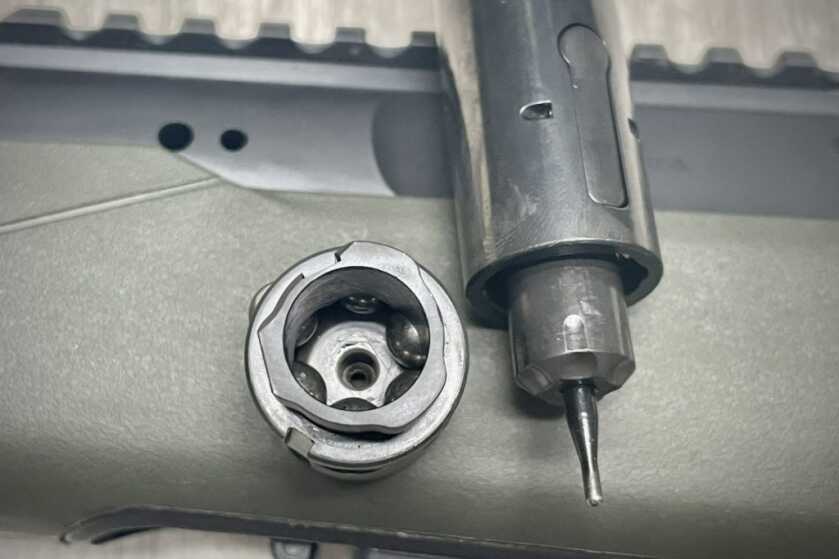
The bolt head also features a tri-lug locking mechanism and can only be attached to the bolt assembly in one orientation. After placing the bolt head onto the bolt and twisting it clockwise, the bolt head lock plunger will hold it in place.
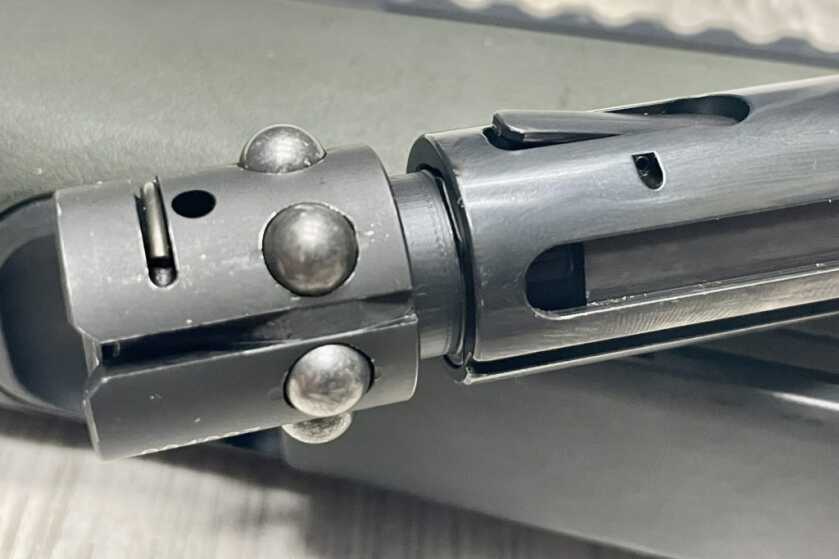
Curious if there was any way to fire the gun while not in battery, I locked the bolt into battery then pressed the quick release button to rock the bolt handle backward similar to what would happen when chamber checking the rifle, and pulled the trigger. The trigger pull sends the bolt handle rocking forward but did not fire the gun throughout my testing.
The camming bolt handle was the source of my confusion the first time I took the Impulse Hog Hunter out to the range. To remove the bolt, the quick release button just above the safety needs to be pressed to allow the bolt to be unlocked and pulled reward (anytime the gun has been put into battery, this button will need to be depressed to pull the bolt back if not pulling the trigger). Then on the side of the receiver, the bolt release needs to be pressed. After doing this, the bolt will pull freely out of the receiver, but the bolt handle may slip and cam forward which was the case for me nearly every time I took the bolt assembly out. This pushes the inner plunger mechanism forward, which locks the ball bearings out as if a round had been chambered. In this condition, the ball bearings hit the receiver and the bolt cannot be placed back in the receiver. All it takes to free up the ball bearings is camming the bolt handle back to the rear and getting the little extraction plunger at the top of the bolt assembly to lock it in place. Once locked to the rear, the bolt assembly is now ready to be put back into the receiver. Hopefully, this helps someone out there and they don’t look at the system confused for 10 solid minutes trying to figure out how the bolt assembly works. Again this is my first experience with a straight pull rifle, and I had not looked into how they worked before getting hands-on with the real deal.
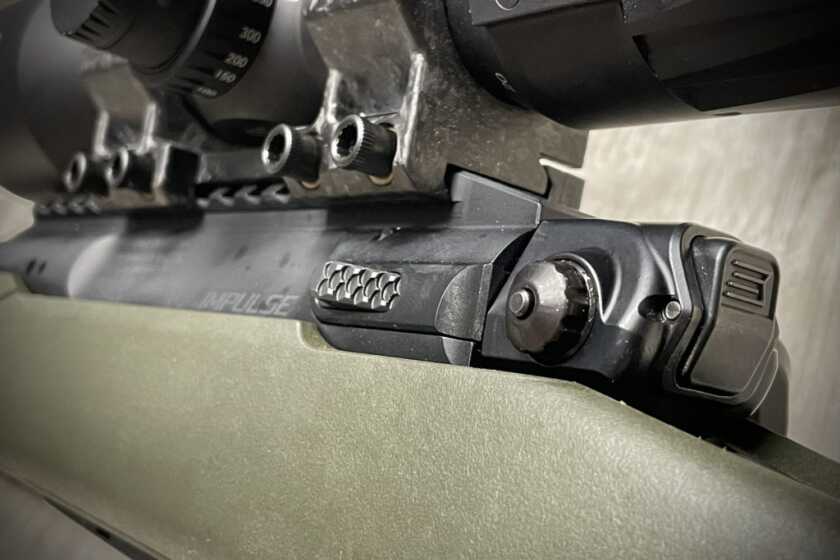
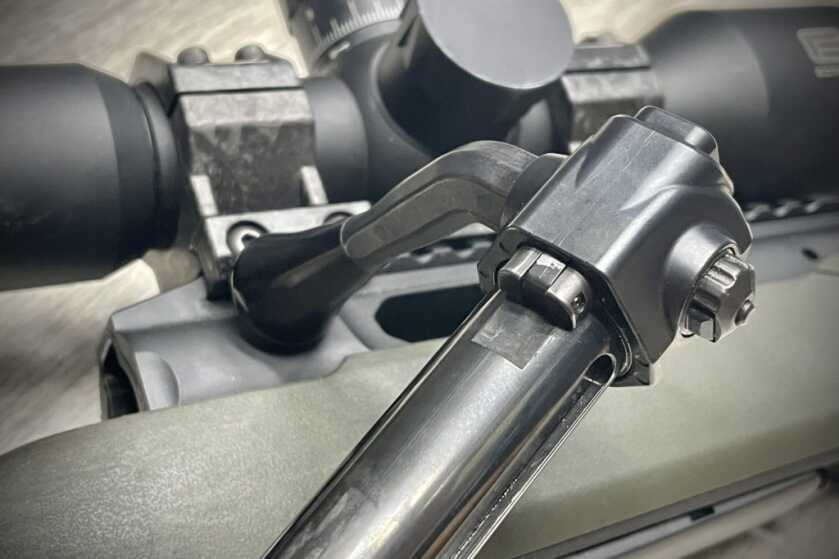
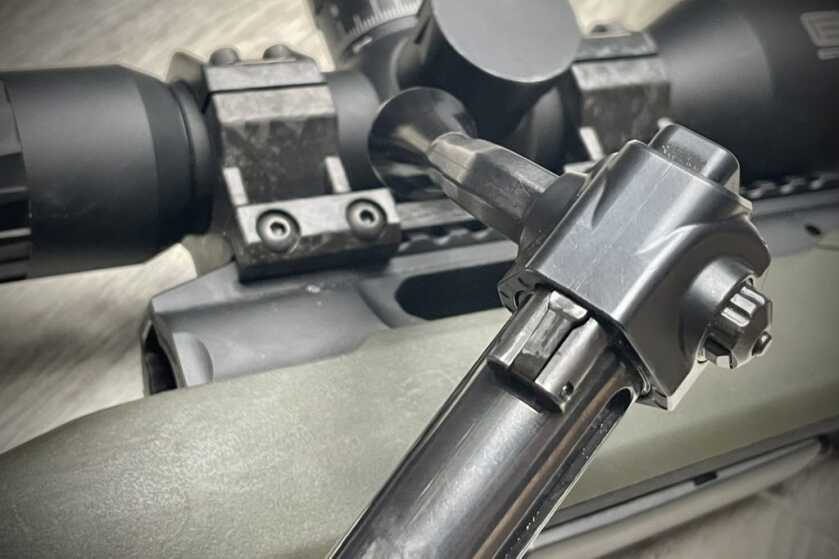
Due to the availability, and wide variety of factory ammunition, I requested to review the .308 Winchester version of the rifle. Savage also offers the Impulse Hog Hunter chambered with 30-06, 300 Win Mag, and 6.5 Creedmoor. The .308 version comes with an 18″ barrel with a 1 in 10 twist rate made from carbon steel and then topped off with a matte black finish. Featuring a 5/8-24″ threaded barrel, the Impulse Hog Hunter is ready for suppressor use, or just a plain ole recoil reducing muzzle brake. Utilizing a medium contoured barrel, this rifle takes longer to heat up when taking shots in quick succession.
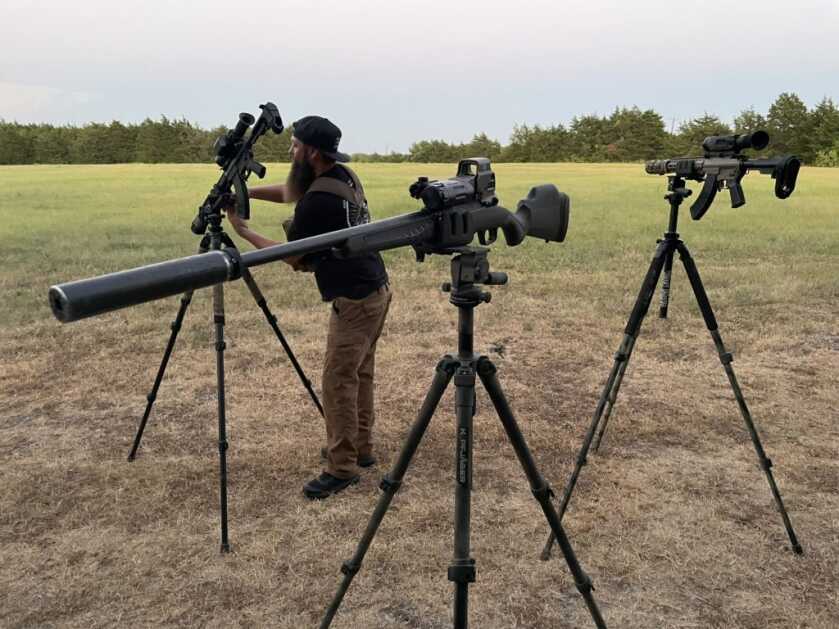
The aluminum receiver features a one-piece 20 MOA rail machined directly into the receiver itself.
Savage has been offering their adjustable “AccuTrigger” in rifles for years, and this is because it works. Adjustable from 1 pound 8 ounces up to 6 pounds, there is quite a bit of flexibility for end-user preferences. The trigger has just the smallest sliver of creep before a clean break. It also includes a bladed safety which prevents the trigger from firing without being depressed as well.
Speaking of precautions, Savage uses a sliding safety with a textured plate for ease of activation. This plate wants to click either all the way forward into the firing position or back into safety keeping it from being stuck in an ambiguous middle ground. While it’s just a safety, it is smooth and it works.
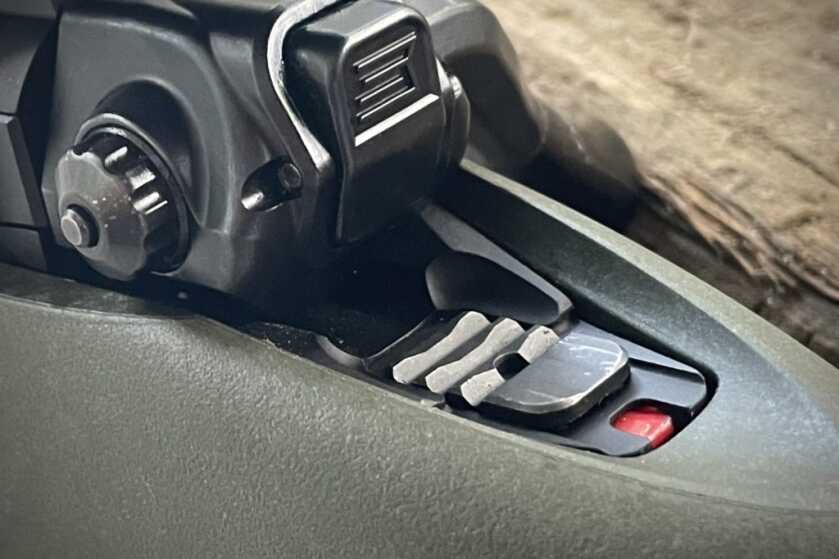
Fitted with an OD green AccuStock, with rubber texturing around the places you hold the rifle, the Impulse Hog Hunter is easy to get a solid grip with. The rubber texture is a nice touch so good job Savage for adding that! The synthetic sporter stock is easily adjustable as well. Straight from the factory, this rifle comes with 5 different cheek risers, and a pile of stock extensions for fine-tuning the stock to your optic height and stature. I will say I ended up finding the tallest riser to fit me the best with the scopes and red dots I used throughout this review.
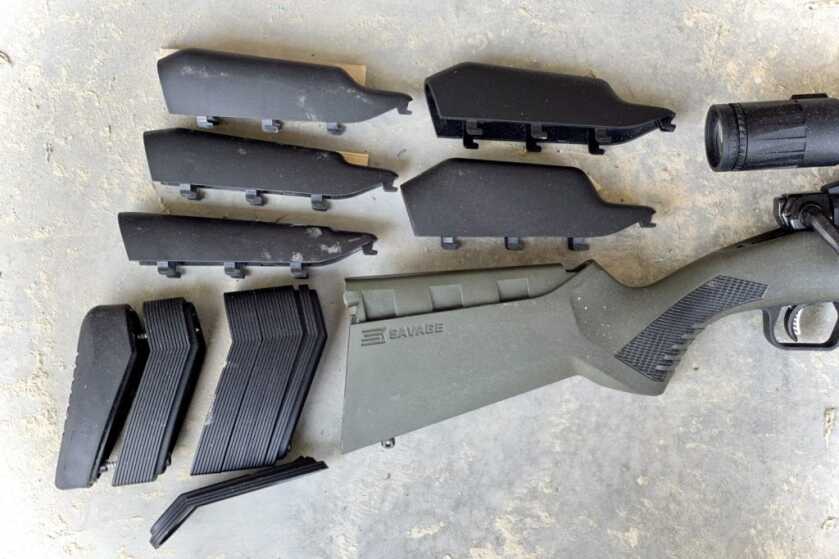
While savage offers four straight pull rifles, two of which offer AICS magazine capacity, the Impulse Hog Hunter is not one of these. It comes with a proprietary 4-round magazine with no other aftermarket options. This is my biggest complaint over the whole model especially when it is named the “hog hunter.” On Savage’s website, they acknowledge that “hogs rarely appear alone” yet limit this rifle to a 4 +1 capacity. For hog hunting in Texas, this just isn’t going to cut it. This may be a great option for European hog hunters, but around here for pest control, we want as many rounds as possible. Bringing this out hunting, my buddies and I got on multiple groups of 20+ pigs and the Impulse Hog hunter stayed in the truck while I brought out my semi-auto AR10. It wasn’t until we found a solo boar that I had the perfect opportunity to break in Savage’s Hog Hunter appropriately. While the magazine works excellently, and Savage offers other straight pull rifles that can take larger mags, naming this model as the “Hog Hunter” just didn’t seem appropriate to me.
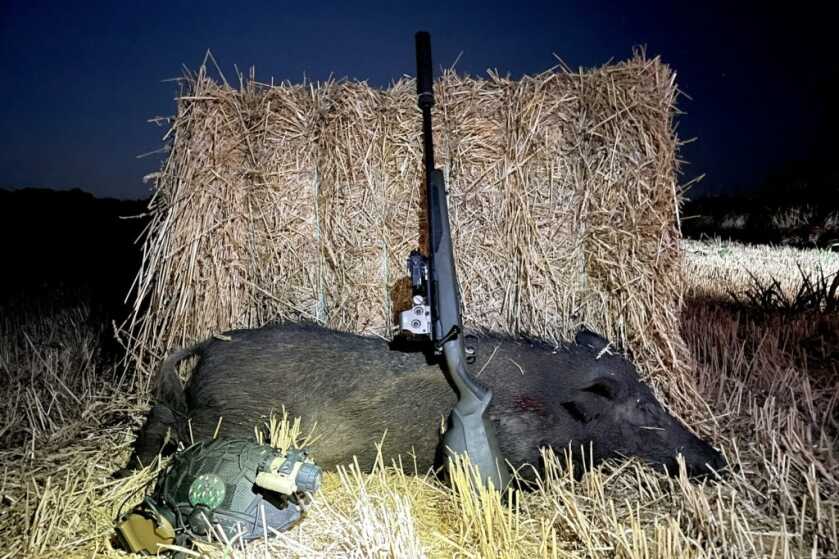
Something to note is the weight of this rifle. For a bolt-action rifle, this thing is heavy. Weighing in at 8.43 pounds unloaded without any optics or accessories, you are going to notice this thing is just built differently than your traditional bolt action rifles. However, the medium contour barrel is what accounts for most of the weight and this helps keep the rifle cool and easy to handle after firing multiple rounds in quick succession. Whether the weight is worth it is application dependent, but it should be considered.
While I think this was designed to be a quick shooting rifle for targets at close ranges, it is still important to test accuracy and what the Impulse Hog Hunter is capable of. Pigs can often be stumbled upon in the woods or fields at distances under 50 yards, but to take the longer shots on pigs or other wild game you will want something that groups well. For my accuracy testing, I used 4 different types of ammunition as follows: 150gr InterLock Hornady American Whitetail, 168gr BTHP Hornady Match, 178gr ELD-X Hornady Precision Hunter, and 150gr Norma Soft Point. I shot these groups from 150 yards away and they averaged between 0.9-2.0 MOA. The 150gr Norma performed the best out of this rifle getting a 0.91 MOA group, followed by 1.31 MOA from the 150gr Hornady American White Tail, 1.76 MOA for 168gr Hornady Match, and 2.01 MOA for the 178gr Hornady Precision Hunter. I also shot a lot of Sellier & Bellot 147gr M80 which grouped even worse, but I mainly used this for shooting steel and didn’t try groups on paper. While not great accuracy for a bolt gun, this is more than accurate enough to get the job done on pigs at close ranges.
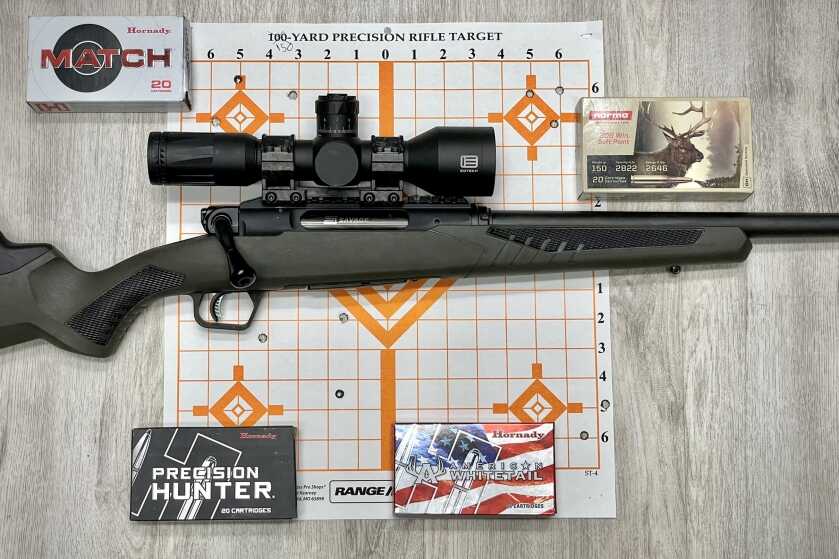
One thing I noticed while shooting paper prone using a sandbag, was that I had to be intentional with chambering rounds. After a little dry fire, I was good to go but the bolt handle is at an angle that made me want to push it slightly up instead of straight forward. This causes the bolt to bind up and not go into battery until you are pushing it only straight forward. The last quirk I found was that you have to be rough when operating the bolt. If you try to eject a casing slowly, it falls off the extractor and gets stuck in the receiver. The bolt needs to be pulled back quickly as the only thing kicking a casing out of the gun is a metal tab at the back of the receiver that hits the casing when exposed. This means the velocity of the bolt is what is controlling how fast the casings are ejected.
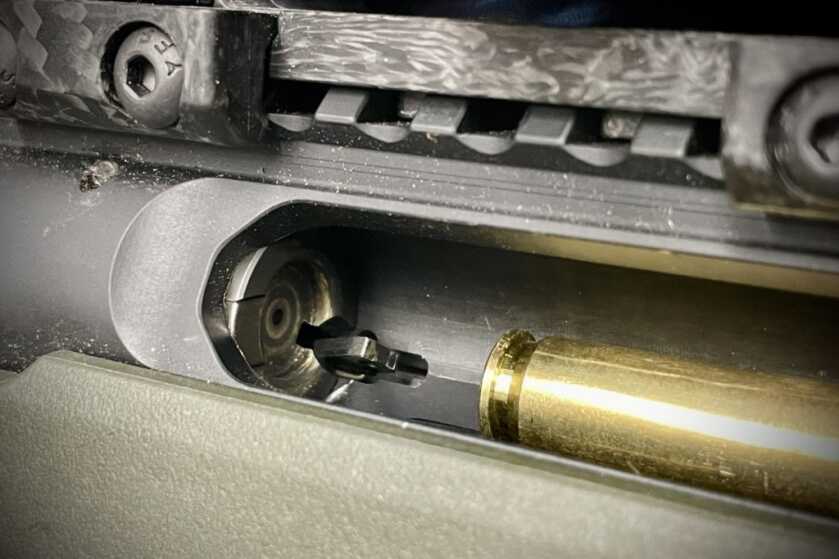
Overall, this rifle features a pretty sweet operating mechanism, and I can now say I am a fan of straight pull rifles after running one myself. It is quick, efficient, and different which makes it all the more fun to test out. Coming in with an MSRP of $1,379 the Savage Impulse Hog Hunter may be more than a budget bolt action rifle, but it remains one of the lowest costing 30 caliber straight pull rifles available.
***Buy and Sell on GunsAmerica! All Local Sales are FREE!***



Sounds good but a Swiss K-31 7.5×55, straight pull, rifle with an effective range of 540 meters would fit the bill as well.
Not to mention that it super accurate and, if you can find a good one, half the price.
The bolt on the rifle can be swapped for left or right handed shooting
Rifle looks great but will it be available in left-handed version? I am a disabled veteran and have to shoot that way. Thanks in advance.
Regards
Jim